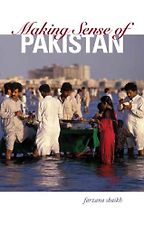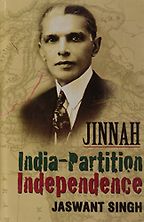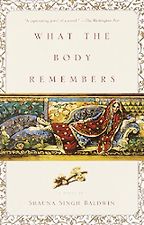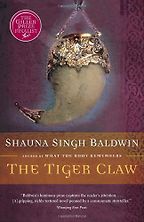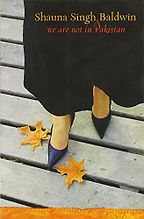Tell me about the Farzana Shaikh book you’ve chosen to begin with.
Farzana Shaikh’s earliest historical study, based on her doctoral research, was a timely attempt to investigate the quest of a cohesive political community anchored on the historical and intellectual ethos of worldwide Islam within a specific South Asian context. That volume had tried to move the discourse on Pakistan’s evolution from the prevalent paradigm of high politics of a few powerful men at the top, nudging its reader to seek long-term explanation of this country’s evolution, especially after the post-1857 trauma. Surely, this was a dilemma faced by the Muslim élite who often differed over the very public role of Islam, yet, irrespective of their doctrinal and variable strands, they also sought to define ‘Muslimness’ in holistic ways.
Like its rich and often turbulent past, it was again in the Indus Valley that a predominant strand began to assume a formidable formulation in the form of Pakistan, though its impetus came from upper India and the lower Gangetic regions. The hasty dissolution of the Raj led to a post-1947 configuration in South Asia, which only grew on inter-state conflicts instead of seeking friendly co-existence. True to its history, the Indus Valley was left on its own, faced with suspicion and hostility both from its eastern and western neighbours and, in the process, underwent fragmentation as well as redefinition, which persist even today.
Shaikh is right in suggesting that there have been multiple forms of Islam and, in the same vein, there are numerous perceptions of Pakistan. Well, that should not be surprising, especially to any scholar, since we are talking about a populous and immensely plural part of the world and it must not come as a surprise that even countries like the United Kingdom, Belgium, Italy and Spain may have similar challenges, though, of course, with several substantial differences. Yet collective identity is always a fluid and evolving paradigm and in that sense a period of 60 years may be too meagre. Even Israel, often mentioned by our author in her volume, has serious ideological problems, not only vis-à-vis its Arab population but even amongst its own Jewish Zionist hard core who differ over the nature and direction of their very Jewishness.
Yes, India had a better start since it inherited the mainstream institutional framework from the Raj, has been advantageously located away from the restive frontier regions and had been lucky to have a long list of founding fathers, who, unlike their mostly flamboyant Pakistani counterparts, built up enduring institutions. However, even the very Indian identity is comparatively quite young and still evolving, though claims by Jawaharlal Nehru and others of its historicity are no less trivial. But then real India, in a way, was the Indus Valley as recorded in Rig Veda unless we are talking about Hindustan, though the Indus Valley, curiously, never forsook its adolescence.
Post-9/11 multi-dimensional spotlight on Islam has caused, among others, two kinds of attitudes amongst Muslims: defensively aggressive and apologetically defensive. Of course, there are many Muslims who do not seek a single-factor explanation of the complex geo-political and ideological phenomenon known as Political Islam, which, like Hindutva and Christian Zionism (and Zionism on its own), has been with us since the early 19th century. The recent volatility is not solely an intra-Muslim problem; it is equally linked with the acute imbalances within the international systems, which have often helped scripturalists attain primacy over other strands. Political Islam is a rallying cry for systemic change and for the displacement of corrupt and humiliating systems, yet may not be lacking consensus when it comes to systemic alternatives. While fighting hegemonies, several of its own trajectories have themselves the tendency to become hegemonic. Cases of corruption and extra-regional assaults have certainly not deflated the mystique of political Islam given its powerful components such as resistance, sacrifice, utopianism, shared brotherhood and austerity. Following the dissolution of the communist regimes, it has been asserting its own space and here its various manifestations are falling beyond the orbit of simplistic and monolith definitions. Many Muslims, especially from amongst the modernists, have readily internalised simplistic and solely negative explanation of Political Islam, which, accordingly, becomes the bane of all the problems across the Muslim countries and communities.
Historically, Muslim modernists in India had aggregated several regional and ecclesiastic groups to form a loose alliance to obtain a territorial identity but then their successors failed to deliver on the problems of political and economic disempowerment, and here Islamists began to offer themselves as alternatives. Political Islam is not just violence and is not solely dependent upon bullet, as, in the case of Pakistan, we also witness a vast array of religio-political parties forming governments through ballot and, by using media, rallies and publications, they cultivate their own constituencies. Putting them at par with the militant elements is certainly incorrect and this pervasive view of a monolithicised Islam anchored upon a single-factor preoccupation with violence (Jihadis!) is a miscomprehension of a more complex situation. The spectre of Talibanisation does not mean that the entire heritage of Political Islam in the country is in shambles.
Shaikh lists all the contentious ideological and structural areas, including the ambiguous idea of a Muslim-versus-Islamic state, the predominance of military and mullahs and a less savoury record on reformism, even often at the risk of repetition. Her present book is definitely not a history of Pakistan and perhaps that is why she keeps traversing across the decades and personalities.
Instead of her erstwhile fascination with M A Jinnah, Muhammad Iqbal and Fazlur Rahman and the modernist Islam in the form of demand for Pakistan, here Shaikh, like many other Pakistanis, does not hide her disappointment with the country’s post-1947 leaders and comes closer to Hamza Alavi’s interpretation of a Muslim salariat playing its own chequered game of interests. Alavi’s understandably class-based analysis presupposed a pre-existing Muslim upper middle class in British India, which may be an exaggerated view given the economic underdevelopment and disparate nature of Muslim communities, but that is a different subject altogether. To Shaikh, the élite interests constantly ignored the quest for a consensus identity and that became Pakistan’s major malaise. Several Pakistanis may like to go along with her way of thinking but putting the entire onus of responsibility on Pakistan as an errant run-away from a pristine Mother India, or acting as ‘America’s sullen mistress’, warrants a similar view from ‘the other side of the mountain’.
While her prefatory remarks and the major section of the book are interspersed with an unflinching critique of how Pakistan was imagined, created and has been mismanaged – all in confusion! – her epilogue quite briefly surmises the vocality of its media and civil society, but only as a passing reference. Shaikh, like several others, might have already lost her hope in the makers and unmakers of that country; however, a vast majority of its people – the descendants of the Indus lands – are surely its stakeholders as well and not just the mute bystanders, and, once again, are confronted with gigantic challenges. As in the past millennia, they need to redefine themselves within the context of unpleasant hazards emanating from the outside and from within. If developed countries like Yugoslavia or the Soviet Union can fall apart there is no guarantee that Pakistan or several similar post-colonial states may be able to ride triumphantly over the raging storms.
Your next choice is the book on Jinnah.
Like political contestation between India and Pakistan, their respective nationalist historiographies are equally contentious and, in their efforts to offer grand narrative, they do not shirk from an abrasive self-righteousness. While amongst Pakistani nationalist historians, their country has been a historically ordained reality varying from its Indus Valley distinctness to its predominantly Muslim credentials, whereas in India its formation is perceived as a forced as a forced partition of an otherwise untied Mother India. Here, the founder of Pakistan, Muhammad Ali Jinnah, has often been posited as the spoiler who, in cahoots with the imperial dictum of divide and rule, facilitated this vivisection. Amidst this reductionism augmented by enduring Indo-Pakistani bickering over Kashmir, water resources and proxy wars on each other’s territories, Jinnah is the father figure in Pakistan but a demolition man in the mainstream Indian mega-narrative. The ultra right Hindu forces unite in their suspicion of Pakistan’s inevitability and exceptionalise Jinnah as an evil genius, though often fail to accept that the creation of the fifth largest state in the world cannot be explained through a single factor.
Jinnah was at the vanguard of various historical events and the dissolution of the Raj owed itself to several forces and partition as a part of a decolonisation process has not been strictly unique to the sub-continent. A former foreign minister of India belonging to the Bharatiya Janata Party (BJP), Jaswant Singh was determined to study Jinnah with a fresher perspective so as to seek out the factors behind the division of the sub-continent. His book caused some uproar amidst his own colleagues due to their strong reservations against Pakistan and Jinnah, but in Pakistan it has been well received with Singh enjoying superb and cordial hospitality across the Indus lands. Initially, his own ultra-right party expelled him for writing this book on Jinnah but, given his high profile and a lifetime commitment towards his country and Hinduist ideology, he has been taken back into the BJP’s fold.
For a while and quite often, Singh’s narrative takes its reader away from Jinnah himself and turns into a familiar historical narrative of known political history of the decades preceding 1947. His verdict often focuses on the British imperial policy, which simply dwelt on prioritising its own divisive imperatives. In other words, the false consciousness internalised by an otherwise astute lawyer became a solidified demand for Muslim rights initially anchored on quest for parity with the Hindu majority and then turned into a full-fledged struggle for sovereignty.
While Jinnah as a proponent of Hindu-Muslim unity tried to cultivate closer relationship with Mahatma Gandhi, B G Tilak, G K Gokhale and the Nehrus, most of the Congress leaders either ignored him out of sheer snobbery and arrogance or merely derided him as a spoiler. As early as 1915, on his return from South Africa, Gandhi did not properly appreciate Jinnah’s sincerity for a united nationalist cause and instead, unnecessarily, hinted towards his Muslim origins. Motilal Nehru always reciprocated towards Jinnah until he came under the Mahasabha pressure in 1927-8, but his son, Jawaharlal, often looked down upon Jinnah, as is noted by Singh.
And you’ve chosen three books by Shauna Singh Baldwin! First, What The Body Remembers.
Yes. Away from the sordid realities of South Asian politics, Shauna Singh Baldwin’s fiction offers a fresher, warmer and reflective perspective, though no less melancholy. What the Body Remembers is a story of two Sikh women married to a landowning Sardariji from Rawalpindi, who has an engineering degree from Balliol and lives a very disciplined life trying to combine both East and West in his person and profession. His privileged life is, however, beset by the lack of any offspring from his first wife, Satya, a dynamic woman in her own right, until he is persuaded to marry Roop from the small hamlet Pari Darwaza. Roop’s father is a Sikh by conviction, though originally comes from a Hindu background yet is devoted to his creed and is an industrious farmer whose wife’s early death leaves him with two children. Brought up in a multi-cultural milieu, Roop sees her husband only after marriage and settles well in Rawalpindi both with Sardarji and Satya. The birth of her children bring joy to the household but also engender tensions, which often converge with the rising communal dissension in a plural Punjab, until the events turn riotous. Harrowed by personal frustrations yet still inherently faithful to her religion and husband, Satya is empowered by political developments in India and is no more comfortable with the status-quo-ist attitudes of the Indian upstartish middle class. Her own end at Punja Sahib in Hasan Abdal coincides with the sad mayhem across Punjab where all the four communities take it out on one another. Sardarji’s family, including Roop with her baby daughter, is able to make it to Delhi, only after harrowing escapes through a senseless communal mêlée. In their ‘escape’ they are helped by faithful friends, including some Muslims, yet all around it becomes a tale of bloodshed, dislocation, morass and mass migrations.
Roop is the narrator of the story and in her real life happens to be our author’s grandmother, who lived to a ripe old age in the 1990s and passed away after transferring the Pothowari-Punjabi folklores to Shauna Baldwin. The grandma spoke her own mother tongue and reminisced about her life in Pari Darwaza among her Muslim friends and Hindu cousins until she shifted to Rawalpindi, followed by Sardarji’s transfers to Punjab’s canal colonies and Lahore. Her name was tattooed in Urdu, reminding her of her childhood, which, despite its parallel strands of faith-based identifications, often went beyond communal segregation.
This next book by Singh Baldwin is about a British woman.
Nora Baker is known in British history as the first ever woman to have been awarded the George Cross, but very few people know that she was a young Muslim woman, allegedly killed by the Nazis on the allegation of being a successful British spy. Noor Inayat Khan was the daughter of an Indian Muslim Sufi mentor, a classicist and non-conformist of genteel traditions. Noor was born to her American mother in Moscow where Khan had been holding concerts of Indian classical music besides imparting Sufi training to his acolytes. Noor has attracted very few serious historical works and not enough is known about the circumstances leading to her tragic death at a time when the war was itself coming to a close.
Shauna Baldwin’s The Tiger Claw is certainly a dextrously organised story of Noor and her work in Paris with the French Resistance as well as her own life as a Sufi Muslim who sought employment with the British intelligence due to various mundane reasons. Benefiting from extensive research in Britain, India, France and Germany, Baldwin was able to interview several knowledgeable people along with the immediate members of the Khan family in their native Baroda. In the novel Madeleine, whose brother Kabir Khan has been an RAF pilot and after the war is seeking the whereabouts of his adventurous sister, personifies Noor. Madeleine is shown to have been in love with Armand, a French Jew, who himself is incarcerated by the Nazis, and part of her mission is to reconnect with him.
The novel is a story of Madeleine’s heroics and near-death encounters in Paris where the Gestapo runs a very successful network of spies and agents to track down the Resistance and its Allied supporters. On the other hand, the British have their own contacts to facilitate landing and housing of several of their agents, though some of these facilitators might be operating as double agents. Madeleine is both an asset and a dilemma for her British superiors since she is a native woman from colonies but with a unique and cosmopolitan pedigree, while for the French she is almost local though a bit exotic. For Germans, such as her inquisitor Ernst Vogel, she is a mischlinge (mixed breed) but still in the league of fabulous Indian princesses. Her arrest and then torture until the execution – not necessarily by her tormentors – are tragic and the novelist is at her best in conveying the sense of pathos as well as resistance exhibited by a petite woman of resolute fortitude.
She is known as a writer of children’s stories and leaves her narrative surreptitiously in her dark cell. Kabir and the readers are informed, to their consternation, that Madeleine had been executed though the novelist herself is sceptical about the nationality of her executors. Many years after the war, Kabir is ensconced in his ancestral house in Paris as the spiritual successor to his father and it is here that he sees Armand, who has survived the war and the Holocaust, yet, in his own quiet and serene way, carries the memories of his slain lover.
And now the collection of short stories.
While Baldwin’s heroines in her two novels are three South Asian women, along with a host of other ordinary men and women, her short stories cover a wider canvas and involve Ukrainians, North Americans, South Americans and Europeans, as well as a fair representation of South Asians. Here again the characters are mostly immigrants who, otherwise well-established law-abiding citizens, often get trapped in the whirlwind of events such as post-9/11 xenophobia and other forms of racism. Her story ‘We Are Not In Pakistan’, is about a Pakistani-American grandma who is Christian and, along with her American husband, has been settled in the United States. Kathleen is her granddaughter whom she daily accompanies to her school, whereas the grandpa, Terry, is often busy watching football matches on television and is a retired diplomat. Terry and Grandma had met a long time back in the US embassy’s dance parties in Pakistan and got married and moved to the midwest where their daughter, Safia, married a local man. Kathleen often argues with her grandma over her insistence on some of the traditional mores, which, according to the younger lady, are not American per se. For instance, Kathleen is often irked by Grandma’s insistence on Pakistani-style of modest dressing while the granddaughter keeps reminding her that they are in the US and not in Pakistan. Grandma was herself born of an Iranian Christian mother in India and an Anglo father but culturally is more akin to Pakistani Muslim women. She still has one of her older address books containing the names and contacts of her close relatives and friends from Pakistan who had been living in the United States, and quite a few of them ‘disappeared’ following 9/11 as the Home Security and the US Immigration Service personnel chased them up with one excuse or the other. Some of them have already been repatriated to Pakistan; several are languishing in detention centres unknown to many of their relatives, while other harassed individuals are seeking asylum in Canada.
On a normal day Grandma disappears and the entire house initially takes it rather lightly, expecting her return any time but after a day or two Kathleen, Terry and Safia all become immensely concerned. Safia, because of her employment at the airport, remembers that the Home Security and the Immigration Service often connive to arraign unsuspecting residents of Pakistani origin. She is convinced that her mum had been whisked away by the same people.
Certainly, this is an untold chapter of a recent unwritten history where a large number of Muslims, especially Pakistanis, in the United States have ‘disappeared’ and, unknown to their relatives and authorities, are lost somewhere in no-man’s land. The rounding up of most of these people owing to sheer xenophobia is initially owed to a suspicion of being a potential terrorist, irrespective of age, profession or gender, and, with no tangible evidence available, it begins to bank on some immigration-related technicalities. As a consequence, the suspects end up in an obscure recess of the US and other West European detention centres.
Trauma of dislocation is a favourite theme in Baldwin’s fiction as in her first story in this collection, ‘We Are Not in Pakistan’. It focuses on a Ukrainian Jewish professional family who, after suffering from the fall-out from Chernobyl, face a greater sense of alienation across the Atlantic. ‘The View from the Mountain’ is the story of Ted Grand, a retired American military official, who builds a resort on a scenic hill in Costa Rica and develops an interesting but unequal relationship with the locals. 9/11 reawakens a vengeful American nationalist in him as he watches the planes ramming into the World Trade Centre and boils with rage.
The last longish story in this collection, ‘The Distance Between Us’ is about a Sikh academic who teaches in Santa Barbara and is a frequent victim of racist abuse, largely because he is a non-white and also because many Americans mistake him for a Muslim because of his beard and turban. Karanbir Singh’s solitary life as an economist is shaken up with an email from Uma Ginther who claims to be his daughter from his brief marriage with Rita Ginther, and who was born in August 1982, after their split, and is now on her way to California from Detroit. Rita had never disclosed to Karan the existence of Uma and now, at 23, her email brings a turnaround in his life. He is finally convinced that she is his daughter, meets her at the local train station and the next few days are a unique experience for both in learning about each other. Rita could have caused serious problems for Karan by going to the court seeking alimony for their child and even endangering his immigration status in the US by claiming his marriage is only to obtain a permanent stay in the country. Karan takes Uma out to the beach and entertains her to curry dishes from a local Pakistani restaurant whose owner experiences a raucous post-9/11 hostility all around him. Karan had also been investigated for having visited Pakistan once with his ailing mother who had been born in Multan and wanted to see her birthplace before her death.
Get the weekly Five Books newsletter
While on the way back from the beach on that Sunday, Karan and Uma are horrified to see his house gutted due to a malicious arson attack. All his clothes, books and papers, including his passport, have been destroyed in the fire and Karan is both homeless and stateless. Fire evokes all kinds of memories and brings both the father and daughter closer together. Two days later, Karan drives Uma to the train station for her return journey and then comes back to the car park to drive home his old white Toyota. It has been stolen, but he does not want to report it to the police to avoid new complications.
Baldwin’s prose reads fluently and persuasively and anchors itself on a strong sense of authenticity, drawing on the religious, cultural and personal experiences of her characters. Her own immersion in Punjabi (both Gurmukhi and Persian scripts), Urdu and Hindi, along with, of course, her ease with French and English, add a superb quality to her expression while her diverse characters, despite a fair number of Punjabis, come from plural backgrounds. They are multi-cultural people who, like Willa Cather’s pioneer immigrants, are struggling against the regimented forces of official and private dehumanisation and in the process seek strength from their own inner humanity and traditional values. These might be tragic characters but they are valiant, sober and resolute people in a modern world, which is often callous and too exacting.
September 15, 2010. Updated: July 19, 2021
Five Books aims to keep its book recommendations and interviews up to date. If you are the interviewee and would like to update your choice of books (or even just what you say about them) please email us at [email protected]
Five Books interviews are expensive to produce. If you've enjoyed this interview, please support us by donating a small amount.
